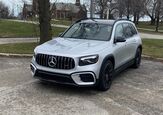Sheer Magnetism: Toyota's Plan for a Cheaper EV Involves Hard-to-pronounce Words

If buyers really do plan to line up to buy electric vehicles, even before the government forces them to, automakers had best figure out a way to make them affordable not just to buy, but to build.
We all know battery packs are expensive (with ingredients clouded by child labor and environmental issues), but batteries are only part of the equation. While simple in operation, electric motors are nothing like the aluminum or iron affairs under the hood of your dad’s Buick Enclave. There’s a lot of metals you’ve never heard of in a permanent magnet AC motor.
Toyota, which wants to be an electric car bigshot, just figured out a way to make a cheaper motor.
In a Tokyo briefing Tuesday morning, Toyota claimed its motors will contain half the normal amount of rare earth metals. Unless you’re ordering a steak, “rare” usually implies scarcity. With automakers diving headlong into EV production, such metals will surely rise in price. In fact, some already have. That’s not good for long-term planning.
Electric motors found in EVs use magnetism to create rotational energy, which is then transferred to the axle shafts and drive wheels. Without straying too far into the technological weeds, the motor utilizes magnets, along with alternating current, to create a rotating magnetic field with which to spin the rotor, thus creating a means of propulsion. And batteries aren’t the cheapest things in the world.
Toyota’s plan is to eliminate the use of terbium and dysprosium in these magnets, and halve the use of neodymium. (Hands up if you’ve ever heard of these metals.) The automaker expects neodymium demand to outstrip supply by 2025, making it a good time to start leaving it in the rear-view. Instead of these rare earth metals, Toyota will use lanthanum and cerium. Both of these metals are 20 percent cheaper and less likely to skyrocket in price as EV sales rise.
In preparation for this electrified future, the automaker will instruct its suppliers to build these bargain basement magnets. The company, which still doesn’t have a battery electric vehicle on the market, plans to make up for lost time and field “more than 10” full-on EVs by the early 2020s. By 2025, the automaker expects to have an electrified version of every model in its lineup.
Measures like this, when paired with the declining price of lithium-ion batteries and economies of scale, should help Toyota turn a profit on EVs one day, instead of taking a hit for the sake of green optics and CAFE rules.
[Source: Bloomberg] [Image: Toyota]

More by Steph Willems
Latest Car Reviews
Read moreLatest Product Reviews
Read moreRecent Comments
- CanadaCraig My 2006 300C SRT8 weighs 4,100 lbs. The all-new 2024 Dodge Charge EV weighs 5,800 lbs. Would it not be fair to assume that in an accident the vehicles these new Chargers hit will suffer more damage? And perhaps kill more people?
- Akila Hello Everyone, I found your blog very informative. If you want to know more about [url=
- Michael Gallagher I agree to a certain extent but I go back to the car SUV transition. People began to buy SUVs because they were supposedly safer because of their larger size when pitted against a regular car. As more SUVs crowded the road that safety advantage began to dwindle as it became more likely to hit an equally sized SUV. Now there is no safety advantage at all.
- Probert The new EV9 is even bigger - a true monument of a personal transportation device. Not my thing, but credit where credit is due - impressive. The interior is bigger than my house and much nicer with 2 rows of lounge seats and 3rd for the plebes. 0-60 in 4.5 seconds, around 300miles of range, and an e-mpg of 80 (90 for the 2wd). What a world.
- Ajla "Like showroom" is a lame description but he seems negotiable on the price and at least from what the two pictures show I've dealt with worse. But, I'm not interested in something with the Devil's configuration.


































Comments
Join the conversation
How long have hybrids been in significant production? How long have there been stories about consequent rise in prices for the materials used in their batteries etc.? How much of a problem has actually resulted? Child labour is a problem in all sorts of industries. Should we stop buying leather goods because of child labor in the toxic tanning business? Should ev's be banned until child labor is eradicated? Surely there is child labor in the materials used for computer devices in regular cars. Certainly exploitation of children and anyone else should be stopped. Exploitation of children can also include being run down by motorists, forcing them to suffer all sorts of pollutants from burning gas and diesel, not to mention the consequences of global warming.
So once these materials are in the recycle mechanism, they won't need to be mined as much - right?